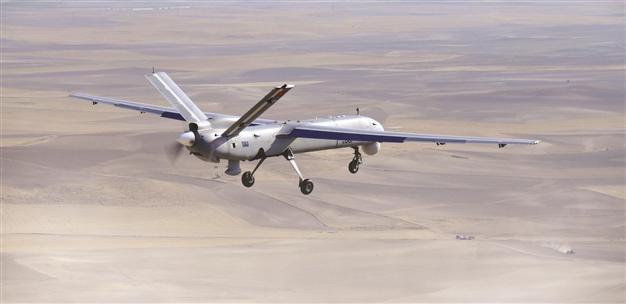Turkey, Europe should cooperate more in defense sector, say officials
Burak BEKDİL

Turkish exporters are now looking at Europe with hopes to make the Anka a lead model for any future European initiative for a consortium. DHA photo
Turkey’s defense procurement officials tend to encourage their European counterparts for joint programs like a potential European UAV program.
“Unless we find large-scale joint programs in aviation Europe may tend to lose its attraction as a center of defense industry excellence,” Turkey’s top defense procurement official, Murad Bayar, told Hurriyet Daily News. “We must develop ideas for multinational solutions in aerospace.”
“Europe needs a UAV and we think we are a good candidate with individual countries,” Bulent Batmaca, Anka’s maker TAI’s Market Development Chief, told the Wall Street Journal recently. Batmaca said TAI is also in early stage talks with NATO about possible drone programs.
Most European drone programs remain unfinished or report little progress due to funding problems and/or because their potential customers often go for U.S. or Israeli options.
Shortly before the 2011 parliamentary elections, passersby noticed a campaign billboard by the ruling party that read: “Our [military] aircraft is in the skies!” “Our” meaning entirely Turkish, “aircraft” meaning a drone and “skies” meaning skies. The Anka, Turkey’s first indigenously built unmanned aerial vehicles (UAV) was really –and briefly—in the skies but only to make a couple of crash landings.
No one knew that the “entirely-Turkish aircraft sported a foreign engine, automatic take-off and landing system, landing gear, mission computer, in addition to its Persian name.
But relative success followed and last month the Turkish government made its first order for an initial batch of 10 Ankas. These will be produced and delivered between 2016 and 2018.
Earlier this year, the Anka had passed acceptance tests. The final, decisive tests on involved a full endurance, 18-hour flight, successful auto landing, data link performance at a distance of 200 kilometers under winds up to 45 knots, and night take-offs and landings (the Anka is a medium-altitude, long-endurance drone. Such UAVs usually can operate for 24 hours at an altitude of 10,000 feet).
Turkey even decided to add satcom capabilities to the Anka – a feature defense experts view as an ideal solution to UAV operations because that capability enable extended-range data capture and transfer, a kind of ‘multiplier.’ The aircraft’s design would evolve over time after consultations with the Air Force about what modification or additions might be needed.
Just when things were going relatively smoothly reports said that the Anka crashed during operational test flights near Batman where it was being operated at a special military base for UAVs.
TAI said that the reason for the crash was unknown but was being technically investigated.
The crash came at a time when Ankara was trying to promote the idea of a Turkey-led European consortium to produce a next generation UAV. Losing much of their hopes on marketing the Anka to Egypt and other friendly countries in the Middle East due to Turkey’s tensions with some of these fellow Muslim nations, Turkish defense exporters are now looking at Europe with hopes to make the Anka a lead model for any future European initiative for a multinational consortium. Off-the-shelf sales of the Anka are also an option.
